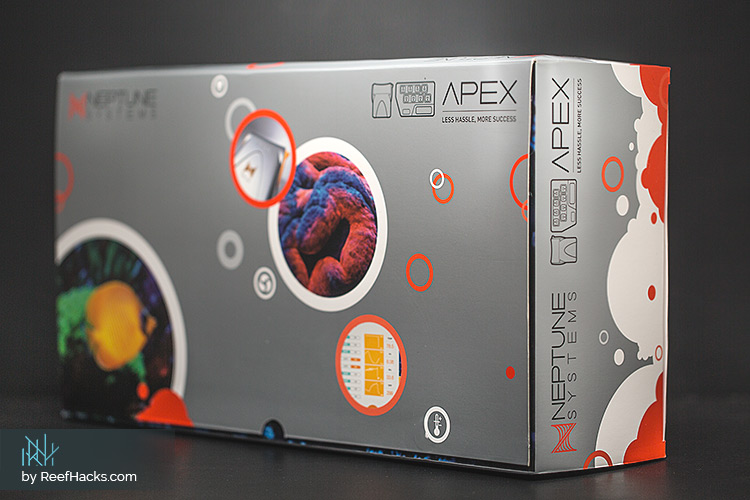Unless you’re a skilled aquarist, the notion of establishing and maintaining a reef aquarium feels too complex for many aspiring reefers.
While I had an extensive amount of experience with freshwater aquariums before diving into the salty underwater realm of reef tanks, it was still challenging. I can only imagine how confusing and overwhelming topics such as water parameters, lighting and nutrient export is for a complete novice.
For years, countless would-be reefers simply tossed their dream of basking in their own slice of the ocean out the window. As an advocate for reefing, this breaks my heart, but is understandable.

Author:
As a lifelong aquarist, Yuliya has an endless curiosity about our underwater universe. After graduating with a bachelor’s in Environmental Engineering, she transformed her passion into a successful career. While working at the Institute of Environmental Protection in Moscow, her passion for saltwater and reef aquariums only increased. Moving to the United States in 2013, Yuliya embarked on another impactful journey by sharing her unprecedented experience for all aquarium hobbyists ... Read More.

To this day, one of the most common questions I’m asked by non-reefers relates to the perceived complexity and difficulties of running a reef tank. Until recently, my response to these questions was one-half agreement and one-half trying to convince others that while the effort is great, the rewards are even greater.
As the years passed, and technology grew faster than anyone anticipated, my response slowly began to shift. Now, when asked about reefing difficulty, I give my audience a coy grin and say, “Only if you don’t know where to look.”
So, how could a hobby that’s notorious for its complexity and challenges suddenly transform into one that’s more about enjoyment?
It’s all about automation.
Throughout the past several years, aquarium monitoring systems have slowly changed the landscape of this beloved hobby. Essentially, these systems aim to simplify and automate specific maintenance and reporting tasks.
This not only streamlines the actual time it takes to maintain a healthy tank, but offers professional-grade management without having to spend countless hours studying and learning complicated methodologies.
Like all automation-based technologies, some devices are amazing, while most are watered-down versions.
Then there’s the Apex Neptune 2016 Systems.
Designed to provide precise monitoring and management of essential tank elements, the Apex 2016 Neptune Systems is like having a seasoned reefer at your disposal.
When compared to most other tank monitoring solutions, this system offers not only greater parameter control, but refined stability. There’s a reason why the Apex Neptune Systems has remained the most popular reef management solutions for quite some time. Without further ado, let’s find out exactly why Apex is the leading aquarium controller.
The Masterminds of Simplicity - Neptune Systems Overview.
In many regards, 2009 was an intense and unsettled time period. For many, it’s mostly remembered as the start of the Great Economic Recession. However, reefers regard this time period as the beginning of a new era in tank management.
Released in 2009, The Apex Classic transformed aquarium monitoring and management. With a range of powerful and innovative features, Neptune Systems successfully introduced the first consumer-grade tank controller that was as capable as it was affordable.
Since then, the Apex product line has consistently rolled out new innovations designed to streamline the requirements of aquarium ownership.
Based in the San Francisco Bay Area, Neptune Systems has cultivated a reputation among new and experienced reefers as a reliable source of tank monitoring solutions. The Apex 2016 Neptune Systems offers advanced-level control, refined management functionality and the stability this company is known for.
Real Value Without Sacrificing Real Control - Apex 2016 Review.
Stemming off the success, and critiques, of the Apex Classic, this updated aquarium controller is the latest evolution of dynamic tank monitoring. As the flagship device from Neptune Systems, the Apex 2016 Systems refines their already solid approach to tank management.
While there’s much to say about the Apex 2016 System, I can’t go further without addressing a feature responsible for most complaints: internet connection options.
The coolest feature of Apex Controllers, in my opinion, is the Apex Fusion cloud-based interface. Capable of supporting realtime parameter readouts, customized alerts and access to the Apex dashboard from any internet device, it truly changed the way aquarists interact with tanks.
But, there was just one problem.
In order to connect the Apex controller to the internet, it had to be hardwired. Obviously, this requirement posed logistical problems, most notably the distance between modem and controller. If you were lucky enough to have both modem and controller nearby, or a very long ethernet cable, this wasn’t completely detrimental. Otherwise, you’d be out of luck.
Despite overall praise from the reefing community, Neptune Systems paid attention to the rumblings from consumers who need greater connection flexibility.
In response, the Apex 2016 System features built-in wireless connectivity.
To sweeten the addition, connecting to a wireless network is incredibly straightforward. Once the Apex controller is powered, simply select the Wi-Fi network and connect. In my experience, setting up the device via wireless is much like any other smart device. You can find the full starting guide here.
One word of caution, however. If your wireless router looses power, or fails, its automatic cloud monitoring service also goes out. But the connection is very strong, you don’t need to worry about.
The wireless interface is compatible with most routers made after 2005, as long as it supports WPA2/AES network configurations. Check out this helpful factsheet offered by Neptune Systems to learn the finer details about the Apex wireless feature.
Now that we’ve got that covered, let’s dive deeper into the features and functions of this celebrated controller.
The Elements of Control - Exposing the Apex System.
As a complete monitoring solution, the Apex 2016 Neptune Systems delivers a full range of features.
One of the primary roles of this device is to prevent tank crashes by closely analyzing vital environmental metrics. Not only does this system consistently monitor equipment to ensure optimum functionality, but its influence on your tank goes far deeper.
Instead of simply identifying and notifying you of parameter deviations, the Apex 2016 Neptune Systems takes corrective action. Leveraging both its built-in tank operation guidelines and your specified parameters, the controller automatically makes any possible corrections.
This automated response has saved countless tanks from catastrophe. Of course, thanks to Apex Fusion, you’re immediately notified of these actions.
However, before you can take advantage of this controller, it needs to be connected to your tank. At first glance, you may think setting up the Apex Neptune Systems will be a complex and frustrating process, but as long as you follow a few simple steps, it’s actually quite easy.
The Apex 2016 Neptune Systems comes with the following:
- Apex Base Unit.
- Energy Bar 832 (EB832).
- AquaBus Cable.
- Calibration Fluid Packs.
- pH Probe.
- ORP Probe.
- Salinity Probe.
- Temperature Probe.
Another new element of the this Apex 2016 version is its display, or lack thereof.
While there is a 2016-based model that comes with a display, it’s roughly $100 more expensive. To better operate the Apex controller, all you need is a touchscreen tablet. Since you can find a capable full HD tablet for roughly $70 or less like NuVision, it makes the most sense to avoid the more costly version and provide your own display.
It seems we aren’t the only ones who value cost savings. Neptune Systems decided to avoid a standard display in this version as it would add too much cost to its manufacturing process, which would ultimately result in an increased retail price.
Another noteworthy feature is its backwards compatibility. The Apex 2016 system is compatible with displays from their other products. However, I would recommend setting up an NuVision 8-inch Full HD (1920 x 1200) tablet as your display. It’s not only more visually pleasing, but offers clearer readouts than the Apex Display Module.
Installing the Apex 2016 Neptune System.
Installing this system is relatively straightforward. To begin, mount the Apex Base Unit to a solid surface, such as your wall or tank stand. Make sure there’s at least 2 to 3-inches of space underneath the base unit for cables to run. Next, you’ll mount the Energy Bar 832 with its mounting bracket near the base unit. For this, make sure there’s at least 1-inch of space above and 1 to 2-inches to the right of the Energy Bar.
Once both components are securely mounted, plug the AquaBus cable into either of its designated ports on Apex controller and connect to the same ports on the Energy Bar. Now, it’s time to give the device power. Connect the power cord from the Energy Bar into a wall outlet.
Confirm power by identifying the status light color on the Apex controller. When a solid connection is made between the Energy Bar and the controller, the status light glows orange.
Now, it’s time to connect the probes and other aquarium devices.
With a total of 13 ports, the Energy Bar offers not only space for its own proprietary equipment, but can also be used to control other devices, such as flow pumps and lighting. Each outlet (8 total) comes with its own LED status light, which offers instant operation feedback. Controlling and monitoring all connected devices is quick and surprisingly precise via display panel or on the Apex Fusion dashboard.
Once the water parameter probes are secured to the Apex Base and placed in your aquarium, it’s time to calibrate the system. When connected to the Internet, setting up the unique parameters of your entire tank is quick thanks to the newest feature, the Apex Configuration Wizard.
While I’m not going to dive into this feature, it’s worth noting that even if you have limited knowledge of ideal parameters, the Configuration Wizard guides you to the safest settings based on your type of tank. For those with limited knowledge, this is truly a lifesaver, or should I say, tank-saver.
If you’re interested in furthering the quality of water parameter monitoring, then you should definitely check out the newest product, Apex Trident Monitoring Device. In brief, this advanced monitoring tool analyzes the three building blocks of healthy coral: Calcium, Alkalinity and Magnesium. This robust tool maintains precise parameters via Titration, which is the scientifically proven dosing method of micro-dosing nutrients.
It connects to the Apex controller via the 1LINK port or AquaBus cable. Since there are no probes, it’s operation is incredibly efficient and stable. Water samples are drawn in through the small intake port and another tube to dispose of waste into a designated drain or container. This is truly an exciting advancement in world of reef tank care. I can’t wait to get one in hands, stay tuned for a review soon!
Be the Control Freak Your Tank Needs - Final Thoughts.
From its impressive monitoring and management configurations, to its straightforward installation, the Apex 2016 Neptune Systems is truly a reefers best friend. While you may feel this level of monitoring isn’t necessary, after experiencing its capabilities, you’ll quickly change your mind.
Ultimately, the Apex 2016 Neptune Systems offers the greatest gift: more time enjoying and refining your corals. Above all else, this is truly the greatest benefit offered by the entire Apex series.
What are your thoughts? Have you used the Apex Classic and are interested in upgrading? Visit the Reef Hacks Facebook page and send us a message! As always, the entire Reef Hacks team is here to help answer your questions or offer personalized advice.
Happy Reefing!
by Yuliya Ivanova for ReefHacks.







